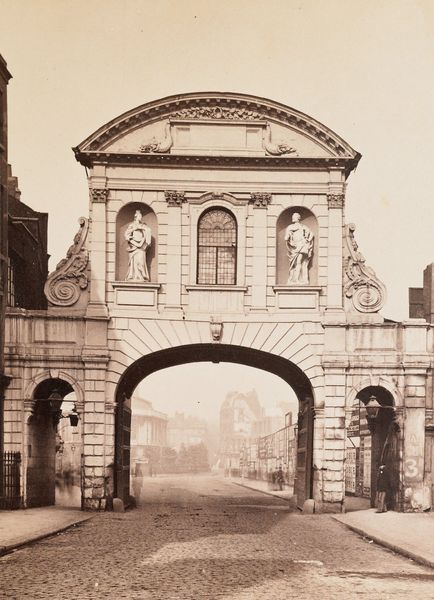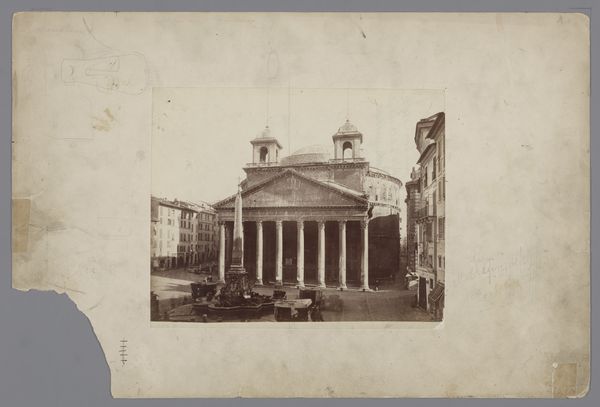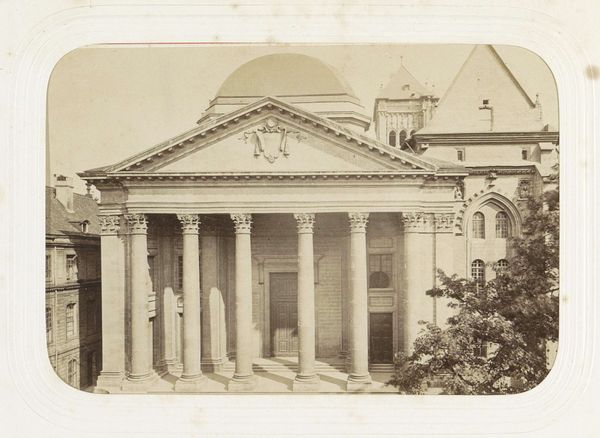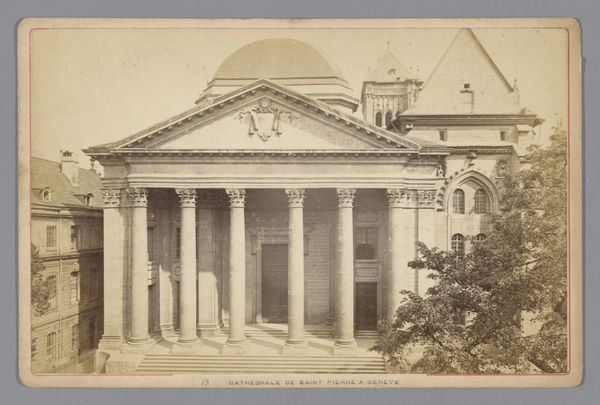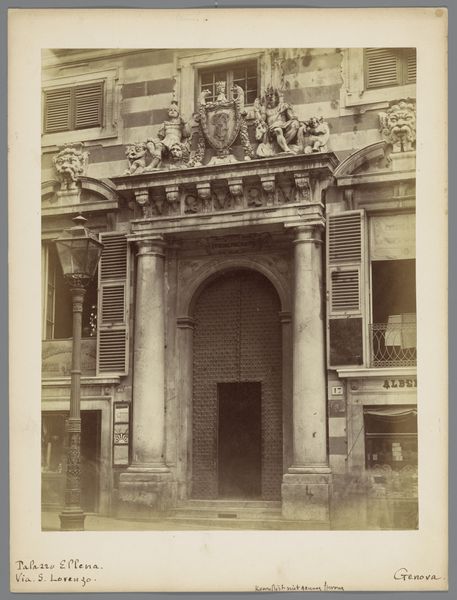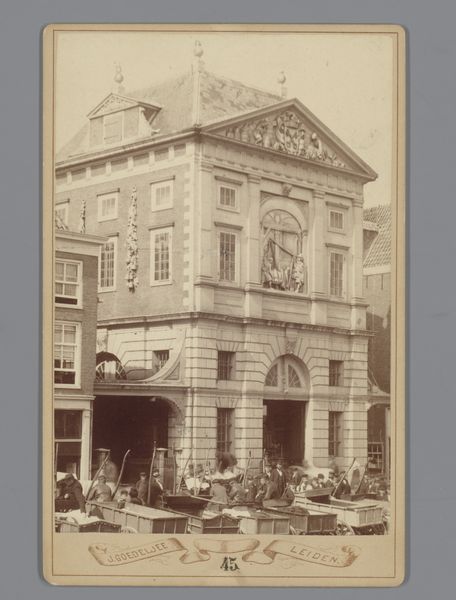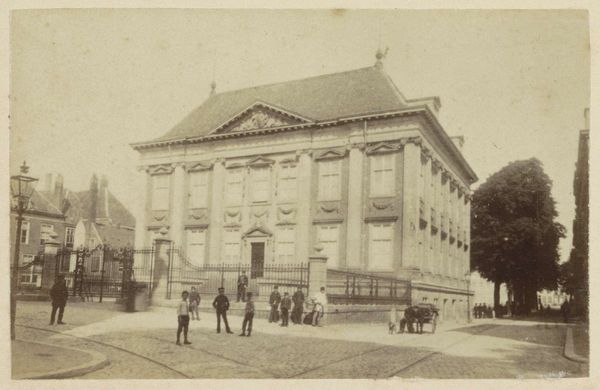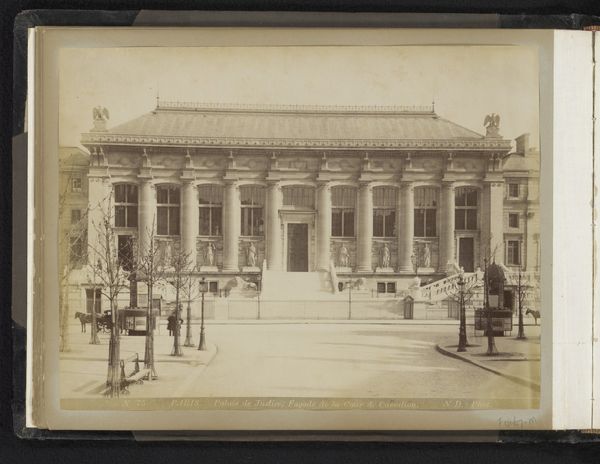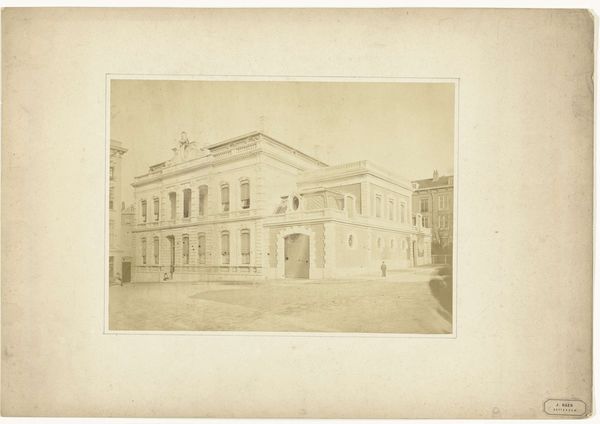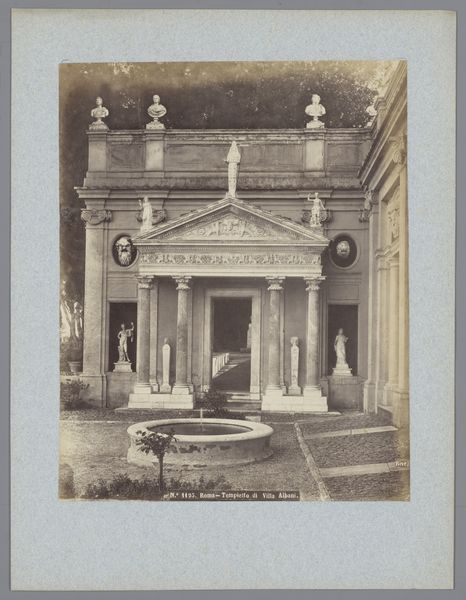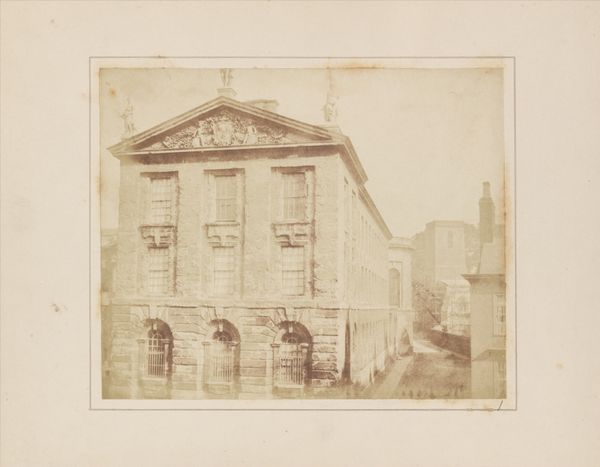
Arch St. Theatre, Arch at 6th St., Philadelphia c. 1859
0:00
0:00
print, daguerreotype, photography, architecture
# print
#
daguerreotype
#
photography
#
cityscape
#
architecture
#
realism
Dimensions: image: 21.6 × 16.8 cm (8 1/2 × 6 5/8 in.) sheet: 22 × 17.4 cm (8 11/16 × 6 7/8 in.)
Copyright: National Gallery of Art: CC0 1.0
Curator: This daguerreotype from around 1859, taken by Frederick DeBourg Richards, shows the Arch Street Theatre in Philadelphia. What are your first thoughts? Editor: A somber grandeur, definitely. The sepia tones and almost ethereal light give the building an austere, neoclassical feel. The composition—the symmetry, the weight of the stone, even—evokes a particular kind of authority, don't you think? Curator: Absolutely. Looking at this theatre, especially situated in the mid-19th century, we see a cultural hub attempting to create a sense of European legitimacy within an American city. The Greek Revival architecture, with its columns and statuary of what appears to be a Muse holding a lyre on top, represents an aspirational cultural identity. Editor: That figure is compelling. A Muse atop a theatre… she speaks of more than just artistic inspiration, wouldn’t you agree? Theatre itself becomes elevated, sanctified. It also speaks to a direct cultural inheritance. Curator: Yes, the architectural language is a direct borrowing from classical antiquity to denote intellectual pedigree, and, arguably, social exclusivity. Considering performance at the time, and the audiences drawn, race and class become important intersectional themes here. Who had access to these spaces, and whose stories were being told on that stage? Editor: Indeed. Consider too, the visual echo. The gas lamp out front mirrors the columns in miniature, hinting at a certain civic order projected onto the space. The sign advertising ‘Paris London’ connects it to European capitals of cultural relevance and prestige. But the gritty, unfiltered texture inherent to early photography creates an uncanny tension in contrast. Curator: Exactly. The image is both staged and strikingly real. It's consciously performing a certain kind of high culture, but the nascent technology renders it in this imperfect way which reflects how these narratives often obscure and repress the histories and figures deemed inconvenient or inappropriate. Editor: The signs themselves are a rich repository. One has the name “Peddie’s” in block letters: simple, mercantile; whereas the smaller theatre’s poster bills “The Magic Flute” and “Paris London.” I'm struck by the stark differences in graphic sensibility and tone; a fascinating microcosm that mirrors our whole discussion! Curator: This makes it such a vital historical document. Through both its aspirations and its unintended realism, it provides invaluable insight into the construction of culture and identity during a period of profound social change. It's really amazing what a single image can unpack. Editor: Absolutely. Now I will see theatres quite differently thanks to considering what meanings lie both inside and outside their walls.
Comments
No comments
Be the first to comment and join the conversation on the ultimate creative platform.
